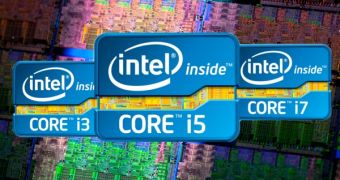Ivy Bridge is a generation of CPUs known to be in development for quite a few months already, and it looks like its maker has big plans and hopes for it, even when compared to the existing series of consumer processors.
Moving to a more advanced manufacturing process always ensures that the next generation of semiconductors is better than the previous one.
In other words, chips will have a higher performance, better energy efficiency and even a lower production cost while sticking to the same thermal package (if that itself doesn't become smaller as well).
The above goes not just for CPUs (central processing units) but also for NAND Flash and DRAM chips, pretty much the whole semiconductor industry really.
One of the more highly-anticipated next generations of processors, in this case CPUs, is the Ivy Bridge from Intel.
Being the successor to the existing Sandy Bridge series, it is, naturally, supposed to get quite a set of assets from jumping to the 22nm process technology.
Current processors use the 32nm process and already have quite a level of performance, with Core i7 chips being capable of handling pretty much any game or application without breaking a sweat (provided they have a discrete GPU complementing them in more graphically-intensive tasks of course).
Ivy Bridge is now painted as having a performance that is 20% higher for parts with similar thermal design power. The new architecture will contribute to this boost.
While impressive, one might remember that Sandy Bridge showed a similar increase compared to Nehalem chips, so this may not be such a surprise at all.
Fortunately, no new chipsets will have to be made, meaning that H67 and P67 motherboards will be more than equipped to deal with the influx of new CPUs, whenever they happen to arrive to market.

 14 DAY TRIAL //
14 DAY TRIAL //